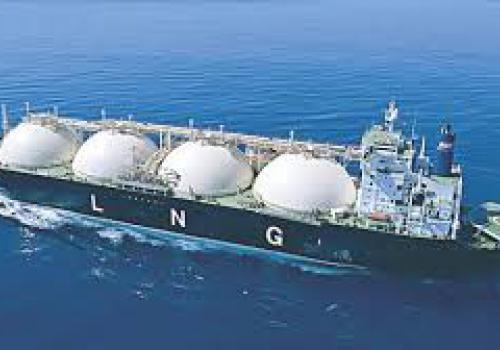LNG exports from Qatar's 77mn t/yr Ras Laffan liquefaction plant have held lower in recent weeks compared with a year earlier, with the facility reported to have shut two of its trains for maintenance. Loadings at Qatargas' Ras Laffan totalled 4.8mn t of LNG on 1-25 November, down from 5.03mn t a year earlier, according to data from analytics firm Vortexa. Qatargas could fall short of the 5.95mn t it exported in November last year, unless loadings ramp up sharply over the coming days. Qatargas' 7.8mn t/yr train 4 was taken off line for unplanned maintenance following compressor issues on 19-22 November, market participants said, with some adding that repairs could take around three weeks. The 7.8mn t/yr train 5 was also off line for around 20 days earlier this month for planned maintenance. A three-week shutdown at train 5, followed by a possible three-week outage at train 4, would remove around 12 cargoes from the market, assuming the trains operate at nameplate capacity and a cargo size of 160,000m³.
Qatar's LNG exports had held quicker or broadly stable for most of the year, despite Covid-19 weighing on global demand and with most other major LNG suppliers cutting exports. Qatari loadings fell year on year in August, but output rose again in September and October (see exports chart). Qatar has exported more LNG to the Pacific in recent months, while deliveries to Europe have fallen, with demand in Asia supported by a colder start to the winter and a more limited rebound of Covid-19 infections than in Europe. The biggest contributors to import growth in recent months were Pakistan, China and South Korea (see exports to selected countries chart). More competitively priced oil-linked supply compared with spot LNG prices may have encouraged term buyers to lift their Qatari purchases.
Around 79pc of cargoes loaded in October were delivered to Asian markets, up from 71pc a year earlier, while Europe absorbed 17pc, down from 20pc. Deliveries to the Pacific had fallen at the beginning of the year as the coronavirus hit demand in Asian markets first, leaving Europe as the world's balancing market. Around 69pc of Qatari cargoes were delivered to Asia in the first quarter, down from 72pc in January-March 2019, while European markets absorbed 29pc, up from 25pc. Qatar's LNG exports have typically gone to long-term customers, mainly in Asia, or head to Europe through the exporter's expanding portfolio of regasification capacity. But state-owned QP, which owns 65pc of Qatargas, launched a new trading arm earlier this month that will allow the firm to target shorter-term placement globally. QP Trading aims to build a globally diversified portfolio of third-party and equity LNG as well as managing risk through physical and derivative activity. Qatar has also been booking new significant long-term capacity at import terminals in northwest Europe, as it aims to boost its LNG production to 126mn t/yr before the end of the decade. QP signed a 25-year deal in October for up to 7.2mn t/yr of import capacity at the UK's Isle of Grain terminal starting from mid-2025. In February, it booked around 3mn t/yr of capacity at France's Montoir terminal for a term up to 2035 and in September 2019 it agreed to take full capacity at Belgium's Zeebrugge terminal for the expiry of existing long-term contracts until 2044.
